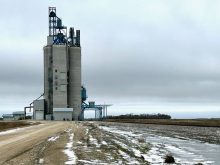Compared to last week, western Canadian yearling prices were steady to $2 lower; calves traded $2-$4 below week-ago levels.
Saskatchewan and Manitoba experienced their first major snowstorm of the season last week. The market tends to incorporate a risk discount for adverse weather as buyers factor in higher death loss. Also, major feedlot operators believe barley will be difficult to find over the winter. Imported corn prices continue to trend higher. Margins in deferred months look like buyers will barely cover feed grain costs.
The quality of yearlings was quite variable and overall supplies of 850-plus-lb. cattle are limited at this time of year; therefore, larger-frame lower-flesh 900-pounders held value. Fleshier yearlings were discounted as much as $6 off average prices. Calves were the feature last week with many pre-sort sales held across the Prairies. Major Alberta operations focused on local cattle and scale-down orders were evident. U.S. buying interest surfaced on favourable genetics in the eastern Prairie regions. Ontario buyers were picking away at Limo-based calves and quality Charolais yearlings. Some of these packages held value from last week if the right crowd was present in Manitoba and Saskatchewan. The Alberta markets were soft, even in Lethbridge. There is little demand because feedlots are carrying sufficient numbers for the time being.
Read Also

U.S. livestock: CME cattle tick lower in thin pre-holiday trade
Chicago | Reuters – Chicago Mercantile Exchange live and feeder cattle futures were little changed but ended slightly lower on…
In central Alberta, medium- to larger-frame Angus-blended steers with medium butter levels coming off light grain ration weighing 860 lbs. sold for $182; south of Edmonton, mixed heifers straight off grass with full health records averaging 875 lbs. were quoted at $175. In northwestern Manitoba, medium- to larger-frame Charolais steers weighing 890 lbs. dropped the gavel at $189. In east-central Saskatchewan, Limo-based heifers on light grain ration weighing 870 lbs. were quoted at $168.
In central Alberta, Simmental mixed steers straight off their mothers weighing 590 lbs. were valued at $197 and Angus-based heifers coming off mothers and hay weighing 645 lbs. were quoted at $175. In the Lethbridge area, black mixed unweaned steers weighing 505 lbs. were valued at $220 and similar-quality heifers weighing 500 lbs. were quoted at $176. In southeastern Saskatchewan, Simmental-based steers weighing 450 lbs. were quoted at $233.
Alberta packers were buying fed cattle at $154 f.o.b. the feedlot and break-even pen closeout values are in the range of $175-$177. The concern is that come April, you won’t find barley in Western Canada unless it’s in a restaurant’s kitchen for barley soup. Barley in Lethbridge is nearing $450 a tonne for nearby delivery and imported corn is hovering at $400 landed in the feedlot.
— Jerry Klassen is president and founder of Resilient Capital, specializing in proprietary commodity futures trading and market analysis. Jerry consults with feedlots on risk management and writes a weekly cattle market commentary. He can be reached at 204-504-8339 or via his website at ResilCapital.com.
















